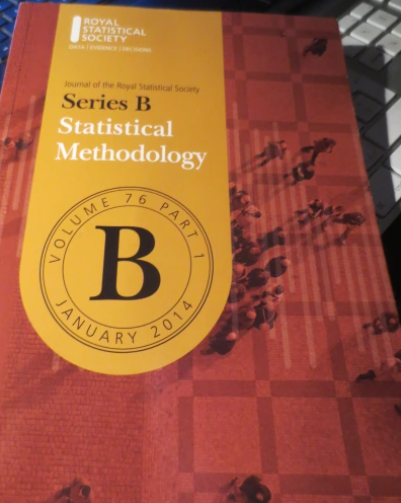Maxway CRT: improving the robustness of the model-X inference
IF 3.6
1区 数学
Q1 STATISTICS & PROBABILITY
Journal of the Royal Statistical Society Series B-Statistical Methodology
Pub Date : 2023-08-17
DOI:10.1093/jrsssb/qkad081
引用次数: 0
Abstract
Abstract The model-X conditional randomisation test (CRT) is a flexible and powerful testing procedure for testing the hypothesis X⫫Y∣Z. However, it requires perfect knowledge of X∣Z and may lose its validity when there is an error in modelling X∣Z. This problem is even more severe when Z is of high dimensionality. In response to this, we propose the Maxway CRT, which learns the distribution of Y∣Z and uses it to calibrate the resampling distribution of X to gain robustness to the error in modelling X. We prove that the type-I error inflation of the Maxway CRT can be controlled by the learning error for a low-dimensional adjusting model plus the product of learning errors for X∣Z and Y∣Z, interpreted as an ‘almost doubly robust’ property. Based on this, we develop implementing algorithms of the Maxway CRT in practical scenarios including (surrogate-assisted) semi-supervised learning (SA-SSL) and transfer learning (TL). Through simulations, we demonstrate that the Maxway CRT achieves significantly better type-I error control than existing model-X inference approaches while preserving similar powers. Finally, we apply our methodology to two real examples of SA-SSL and TL.Maxway CRT:提高模型- x推理的鲁棒性
模型-X条件随机化检验(CRT)是检验假设X⫫Y∣Z的一种灵活而强大的检验方法。然而,它需要对X∣Z有完美的了解,当X∣Z的建模出现错误时,它可能会失去有效性。当Z是高维时,这个问题更加严重。针对这一点,我们提出了Maxway CRT,它学习Y∣Z的分布,并用它来校准X的重采样分布,以获得对建模X误差的鲁棒性。我们证明了Maxway CRT的i型误差膨胀可以通过低维调整模型的学习误差加上X∣Z和Y∣Z的学习误差的乘积来控制,这被解释为“几乎双重鲁棒”的性质。在此基础上,我们开发了Maxway CRT在实际场景中的实现算法,包括(代理辅助)半监督学习(SA-SSL)和迁移学习(TL)。通过仿真,我们证明了Maxway CRT在保持相似功率的同时,实现了比现有模型x推理方法更好的i型错误控制。最后,我们将我们的方法应用于SA-SSL和TL的两个实际示例。
本文章由计算机程序翻译,如有差异,请以英文原文为准。
求助全文
约1分钟内获得全文
求助全文
来源期刊
CiteScore
8.80
自引率
0.00%
发文量
83
审稿时长
>12 weeks
期刊介绍:
Series B (Statistical Methodology) aims to publish high quality papers on the methodological aspects of statistics and data science more broadly. The objective of papers should be to contribute to the understanding of statistical methodology and/or to develop and improve statistical methods; any mathematical theory should be directed towards these aims. The kinds of contribution considered include descriptions of new methods of collecting or analysing data, with the underlying theory, an indication of the scope of application and preferably a real example. Also considered are comparisons, critical evaluations and new applications of existing methods, contributions to probability theory which have a clear practical bearing (including the formulation and analysis of stochastic models), statistical computation or simulation where original methodology is involved and original contributions to the foundations of statistical science. Reviews of methodological techniques are also considered. A paper, even if correct and well presented, is likely to be rejected if it only presents straightforward special cases of previously published work, if it is of mathematical interest only, if it is too long in relation to the importance of the new material that it contains or if it is dominated by computations or simulations of a routine nature.

 求助内容:
求助内容: 应助结果提醒方式:
应助结果提醒方式:


